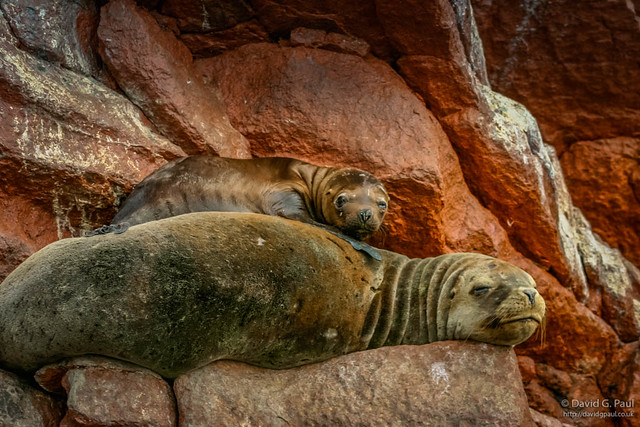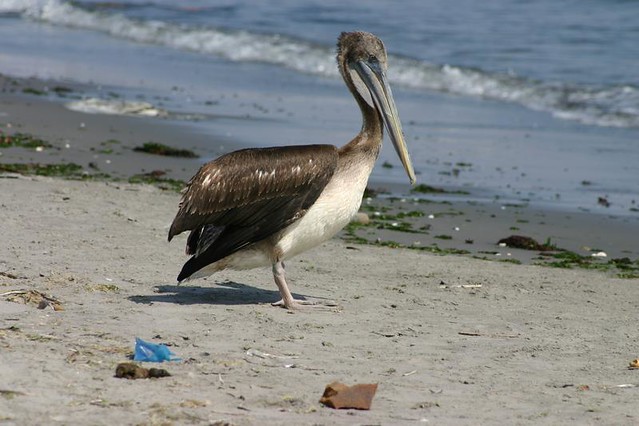The next morning we had to get up quite early as we had to drive about an hour down the road to the fishing village of Pisco (home of the Peruvian favourite, the Pisco sour). The town looked quite rough and was being worked on quite heavily, whilst we were there our guide told us that they’d been hit quite badly by the earthquake in August 2007 and they were still recovering. From here we took a tourism boat out to sea where we would eventually reach the Ballestas Islands.
After about 10 minutes we reach our first island which had a large candelabrum etched into the side of a sand dune. It’s been there for hundreds of years at least and has never really got any damage due to it never raining there and being protected from wind erosion. Once we’d done taking photographs it was about another 20-30 minutes until we reached the actual Ballestas Islands where there was plenty of wildlife to see. One of our first shots of the islands was of all the birds perched on the rocks. After seeing Peruvian boobies, cormorants, and various other types of bird it wasn’t long before we started to see a lot sea lions and penguins – neither of which I’d ever seen before in the wild so this made the trip really worthwhile. We got really close to the island and in some places close enough to touch, but the smell of the guano (the bird droppings) was extremely overwhelming, but tolerable just for the wildlife.
When we got back to the shore we took a few pictures of a Pelican that was sitting on the beach and then headed off again in the tour bus to the Paracas National Reserve. The reserve isn’t really much more than rocks and sand, and some amazing cliffs. The roads are made by water soaking in to a special mineral that goes hard when it reacts with water. Paracas is a protected area full of wildlife, but nowhere near as good as the Ballestas Islands. They did used to get Flamingo’s here but since the earthquake they have moves slightly further round the coast to where it’s harder to get to them. Some of the views in the reserve were really amazing with patches of red sand on cliffs overlooking deep blue water.
Of course, once we had finished here there was plenty more time spent travelling back to Lima, and the Sonesta Miraflores for our second stay in that hotel. As it was early afternoon there was plenty of time before lunch so again we had the chance to explore Lima. This time we found the shopping Mall that was mentioned during our previous tour of Lima. It’s different to most shopping malls in the UK as it’s built in the side of a cliff and you have to descend down into it. The cinema in there, which we visited the following week, feels a lot grander than most cinemas in England too despite the fact that the quality of the equipment was poorer, and the tickets cheaper. Outside the mall are people trying to sell their wares, and are pretty persistent and can take some effort to get rid of – just like in Cairo.

